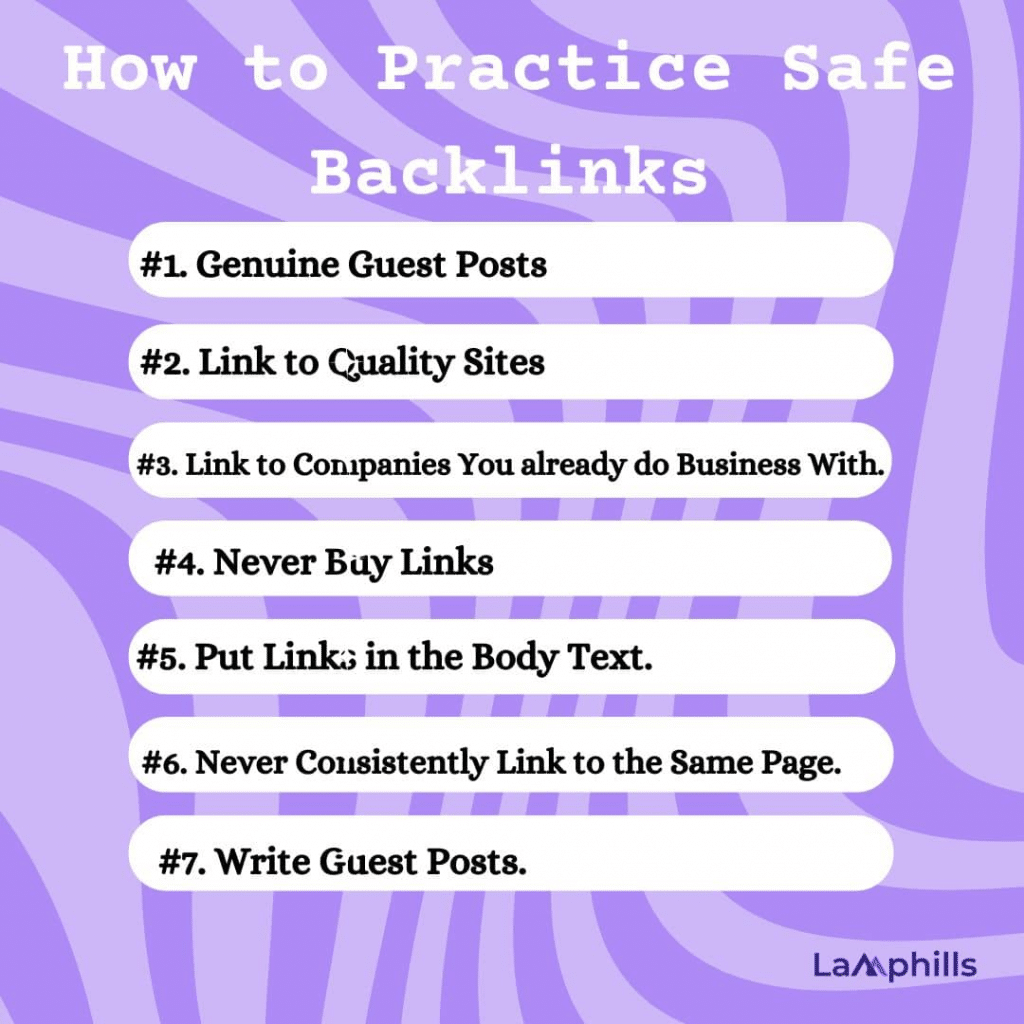Marketing teams should concentrate on their SEO workflow when producing SEO content to advertise their brand. SEO workflows assist you in creating a solid SEO plan, minimizing misunderstandings and mistakes, and tracking your advancement. In this article, I will explain the SEO workflow process and show you how to set up an efficient workflow for your team.
Additionally, we’ll examine the stages SEO in this post and offer tips on how to optimize your website for local search results.
Key Points:
- An SEO workflow is a set of steps to achieve objectives for organic traffic, leads, or sales. You need to take the right steps, beginning with keyword research and concluding with online publication.
- It assists you in ensuring uniformity across teams and geographical areas, reducing error rates, increasing productivity, and improving your projects’ caliber.
- A vital component of creating content for search engine optimization is making sure it is readable.
- Researching keywords helps you manage who sees and where your website shows up in search results.
- For SEO purposes, duplicate content is a big no-no, as Google disapproves of multiple instances of the same content.
What Is An SEO Workflow?
An SEO workflow is a process for carrying out and completing SEO projects in a team setting. To reach your goals for organic traffic, leads, or sales, a series of activities must be taken in the correct order, starting with conducting keyword research and ending with publishing the final product online.
The person in charge of creating the strategy and overseeing the project is the SEO manager, who makes use of tools such as an SEO content checker. They collaborate with several teams, such as the technical team, which develops websites in accordance with specifications, and the content writers, who produce and refine copy. Before the content is posted on the website, it is also reviewed by the editorial staff.
Note that when you define an SEO workflow, everyone knows their role and what needs to be done in order for the project to be completed successfully. This can help ensure that tasks are completed on time and that no steps are missed along the way.
Benefits Of Using SEO Workflows
SEO workflows are an integral component of any business and are vital to the success of SEO initiatives. These workflows help you assure consistency between teams and geographies, lower error rates, boost productivity, and enhance the quality of your projects.
Additionally, workflows also give managers insight into what each team member is working on, enabling them to remain informed about the state of the project.
Furthermore, its advantages include higher productivity, fewer errors, enhanced quality, consistency, and visibility. Therefore, workflows should be incorporated into your everyday operations if you want to maximize your SEO efforts and experience higher success as a business!
What Are The 4 Stages Of SEO Workflow?
Researching keywords, assessing readability, building links, and marketing are the four phases of SEO. I will examine each of these in more detail.
#1. Keyword Research
You should choose your keywords before you start producing your article. The actual words or phrases that members of your target audience enter into search engines should be these keywords. They can be classified as long-tail—usually more than four words and frequently taking the form of a question—or short-tail—one to three words.
Your content will be more likely to appear on page one of your audience’s search results if you incorporate these keywords into it. Because 92% of search engine clicks occur on page one, this is significant. Keep in mind that although you should employ keywords in your content, you shouldn’t use them excessively. It will lower the quality of your content and discourage viewers from reading it all.
There are two ways of getting the appropriate keywords to use:
1. Using Google is the first method.
Enter the subject matter you want to write about into Google. Use these terms as keywords by looking for related queries or questions that people have asked on Google. Although this strategy can be time-consuming, it can also be effective.
2. Using a keyword research tool:
Tools like DemandJump can provide you with more precise keywords to employ by telling you how keywords are performing and what you and your rivals are ranking for.
#2. Readability Check
Ensuring the readability of your content is a crucial aspect of crafting it for search engine optimization. This is important for most people who read posts or articles on their phones. Here are some tips to improve the readability of your content:
- Dividing long text passages. Readers may click off your page before they finish reading these since they appear lengthy and daunting.
- Lists are included. Lists are an excellent technique to divide up the material and provide readers with pertinent information rapidly.
- Important information is bolded. This will highlight for the reader the things they should know.
- Make use of headers. Instead of forcing visitors to sift through your content in search of what they’re searching for, you may allow them to move directly to the portions that interest them. The need for readers is to locate information quickly. Note that readers spend an average of 54 seconds on a web page.
#3. Linking
Your content will rank higher in search results if it appears authoritative. Actually, one of the main EAT ranking factors is authoritativeness. In order to appear like an authority, you should include both internal and external links in your text. Therefore, you should avoid linking to rival websites when you make links to external pages. Instead, include links to reputable sites to demonstrate your research and ability to support your claims.
Furthermore, internal links should only be made in an upward direction. This implies that you should only link to the relevant pillar page when constructing a sub-pillar page. You should provide links to the related pillar and sub-pillar sites in your blog posts.
Lastly, avoid placing links on keywords when creating them. If you do, the credit for those keywords will go to the pages you link to rather than your content.
#4. Marketing
You need to promote the material after you upload it to your website. You can do this by posting it on social media, emailing or word-of-mouth to others, and incorporating it into ads.
I usually collaborate with other writers or blog sites that are relevant to mine. This helps my content to be more visible and may attract more attention, thereby improving my SEO ranking.
Top 5 SEO Workflow Processes
Here are five types of SEO workflows you can create:
#1. Conducting Keyword Research
Keyword research controls which search results your website appears in and who sees it. Keyword research is an essential part of SEO. Developing a keyword research pipeline will assist you in locating, recognizing, and utilizing pertinent keywords.
Read Also: 13 Best Keyword Monitoring Tools in 2024
#2. Creating Content
You may also design an SEO workflow for content creation. An effective SEO plan must include content production since that is what appears in search results and brings customers to your website.
This is how it could appear if you wish to maintain everything in a single, large workflow:
- Decide on the subject of your content.
- Decide which keywords to focus on in your writing.
- Do research to find relevant data
- Give a synopsis of your content.
- Compose the content.
- Add visuals, videos, and links to your writing.
- Forward the content to the editor
- Examine adjustments and ideas, then implement them.
- Return to the editor for a last review.
- Post content on the webpage.
You can also make use of our content creation calendar to help you manage this process:
Read Also: Discover the Secrets to Crafting Unique Contents in 2024
#3. Optimize Existing Content
Things in your industry change as you continue to produce content. Statistics get outdated, procedures become irrelevant, and information becomes out-of-date. Therefore, maintaining current and fresh material is essential to providing your audience with the most accurate information possible.
This is an illustration of a re-optimization process for content using SEO:
- Determine which content requires re-optimization.
- Determine the reason(s) for content update
- Determine if the article just requires minor edits or a complete rewrite.
- Make the required edits and modifications to your content.
- Release your writing.
Read Also: What is a Content Optimizer and How Can It Benefit Your Website?
#4. Audit Your Website.
Auditing your website helps you to find out what is working and what needs to be fixed on your website to improve the performance of your SEO strategy.
In general, a lot of people will use an auditing tool to make the procedure easier for them. This SEO procedure demonstrates how to use an auditing tool:
- Decide which pages you wish to audit.
- Examine the pages using your SEO auditing tool.
- Examine the outcomes of your opportunities, shortcomings, and strengths.
- Determine the problems affecting your SEO.
- Make the suggested adjustments to your page to make it better.
- Follow the same procedure for every audited page.
Read Also: My 10 Best SEO Chrome Extensions for Optimizing Websites: A Comprehensive Guide
#5. Building Links
Link building is an essential part of SEO that raises your search engine ranking. Internal links facilitate Google’s crawling and indexing of your pages, whereas backlinks increase your website’s legitimacy and traffic. For this reason, it’s critical to optimize your link-building process through workflow SEO.
As with other SEO workflows, you can divide link building into two distinct workflows: backlinks and internal linking.
This is an illustration of a streamlined link-building workflow:
- Find locations for internal links in your newly created content.
- Release fresh content.
- Locate locations on other pages where the new content URL can be included.
- Determine which external pages (blogs, industry websites, etc.) you can get a new link from.
- Examine the connection approach.
- Adjust and optimize as needed.
To make sure your links help you get better SEO, you should establish a workflow process for your linking strategy.

Read Also: A Complete Guide to Building Niche Relevant Backlinks
How To Do Technical SEO Step By Step?
In this technical SEO audit guide, I will cover the following six steps:
#1. Make Your Site Crawlable.
Writing excellent content for pages that search engines can’t crawl and index is pointless. As a result, you ought to verify your robots.txt file first. When web-crawling software finds its way to your website, it starts with this file. Which areas of your website should and shouldn’t be crawled is specified in your robots.txt file. It accomplishes this by either “allowing” or “disallowing” specific user agents’ behaviors.
Go to yourwebsite.com/robots.txt to locate your robot.txt file.
You can access the publicly accessible robots.txt file by appending /robots.txt to the end of any root domain.
It is evident that Hallam is asking for any URLs that begin with /wp-admin—the website’s backend—to not be indexed by search engines.
To test and make changes to your robots.txt file, use Google’s robots.txt tester.
Here, you may enter any website URL to see if it can be crawled and whether your robots.txt file has any errors or warnings.
#2. Verify if Your Website is Indexable.
After determining if Googlebot can truly crawl our website, we now need to determine if the pages on our website are getting indexed.
The site:domain Google Search parameter is the simplest method of determining the number of indexed pages for your website. Type site:yourdomain into the search bar and hit Enter. You will be able to see every page on your website that Google has indexed in the search results like this:
You can get a decent idea of how many pages Google is currently holding using this tool. It is worthwhile to look into this further if you observe a significant discrepancy between the number of pages you have and the number of pages that are being indexed.
- Is your website’s HTTP still indexed?
- Are there duplicate pages that need to be canonicalized that are indexed?
- Are there portions of your website that are not being indexed?
With the help of these three methods, you may have a clear understanding of how Google is indexing your website and adjust as necessary.
#3. Review Your Sitemap
An XML sitemap is a map of your website for Google and other search engine crawlers. It basically aids in the discovery and ranking of your website pages by these crawlers.
A few essential elements need to be considered while developing an effective sitemap:
- Format your sitemap in an XML document.
- It ought to adhere to the protocol for XML sitemaps.
- Include only URLs in their canonical forms.
- “Noindex” URLs should not be included.
- Every new page you create or update should be included.
The Yoast SEO plugin has the ability to generate an XML sitemap on your behalf. You may view the URLs in your sitemap as well as orphaned and missing URLs.
#4. Make Sure Your Website is Mobile-friendly
In 2018, Google declared that mobile-first indexing would be implemented. This meant that the mobile version of your page would be used for indexing and ranking instead of the desktop ones. All of this is necessary to monitor how users interact with material on the internet. It is now more crucial than ever to make sure your website is mobile-friendly.
You can use Google’s Mobile-Friendly Test, a free tool, to see if your page is user-friendly and responsive on mobile devices. When you enter your domain, it will display the mobile version of the page and let you know if it is mobile-friendly.
Additionally, it’s crucial to review your website as well. Use your own phone to browse your website and look for any issues along the main paths that lead to conversions. Verify that all phone numbers, contact forms, and important service pages are operational.
#5. Audit Your Page Speed
These days, page speed affects rankings. For Google in 2019, having a website that is user-friendly, responsive, and quick is essential.
There are numerous tools available to help you evaluate the speed of your website. Here, I’ll discuss a few of the more important ones, along with some suggestions.
i. Google PageSpeed Insights:
This is a strong and cost-free Google tool. On desktop and mobile devices, it provides you with a score of “Fast,” “Average,” or “Slow” along with suggestions for making your page load faster.
Test your homepage and core pages to see where your website is coming up short and what you can do to improve your site speed.
ii. Test My Site:
Test My Site is an additional free site performance test that specifically targets mobile devices, highlighting the significance of mobile site speed for Google. It gives you a thorough study of how your mobile website performs, comprising:
Additionally, it will indicate whether it is slowing down or speeding up, your speed in seconds, and your rating.
iii. Google Analytics:
Additionally, you may view comprehensive diagnostics on how to speed up your website using Google Analytics. The Analytics site speed section (located under Behavior > Site Speed) contains a wealth of helpful information, such as the performance of individual pages across various browsers and nations. To ensure that you are giving your most important pages priority, you can compare this to the number of page views.
#6. Review Duplicate Contents
It’s now time to examine the duplicate material on your website. Duplicate content is a major SEO no-no, as most individuals in the field of digital marketing know. Google dislikes seeing several copies of the same content, even if there isn’t a penalty for it. They don’t really help the user, and Google finds it difficult to decide which page to display in the SERPs, so it’s more likely to display one of your rivals’ pages.
You can perform one quick check with Google search criteria. Put “info:www.your-domain-name.com” in there.
Head to the last page of the search results; if you have duplicate content, you may see the following message:
If you have duplicate content showing here, then it’s worth running a crawl using Screaming Frog. You can then sort by Page Title to see if there are any duplicate pages on your site.
Conclusion: Why Is Content Creation More Important Than Off-Page SEO?
I think that investing time and money in producing good content for your target audience would benefit your company more in the long run.
High-quality content builds your brand’s reputation as a reliable resource, draws in readers, and keeps them interested. It also promotes sharing and repeat visits. Furthermore, content production promotes long-term partnerships and organic growth, although off-page SEO strategies could yield short-term results.
Therefore, rather than depending solely on off-page SEO tactics, I have seen better outcomes by concentrating on the creation of valuable content.
Related Articles:
SEO Outreach Explained: A Beginner’s Guide to Getting Quality Backlinks
How PR and SEO Can Work Together (Growth Hack)
SEO Analysis 101: Best Practices for Better Search Rankings
SEO Marketing in 2024: 5 ‘Facts’ They’re Feeding You That Are Killing Your Rankings






